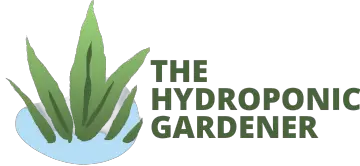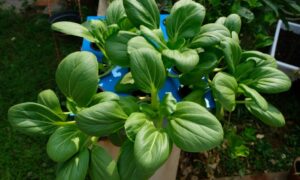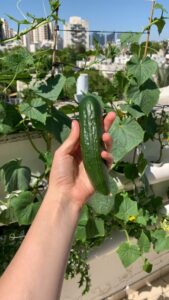Are you looking for an efficient and clean way to grow plants are home? Hydroponics is a modern method of growing plants without soil, using water and nutrients instead.
The hydroponics Wick System is one of the simplest and most affordable hydroponic systems available, making it an ideal option for small-scale projects and beginner gardeners.
This article explores the concepts and principles behind the Wick System and its advantages and disadvantages.
What is the Hydroponics Wick System?
It’s a passive hydroponic system that uses a wick to transport nutrients and water from a reservoir to the plant roots.
The Wick System has been around for decades, and it is a popular choice among hobbyists and DIY enthusiasts due to its simplicity and affordability.
How Does the Wick System Hydroponics Work?
The system consists of a container or tray that holds the plant roots, a reservoir that contains the nutrient solution, and a wick that connects the two.
An absorbent material such as cotton or nylon makes up the wick, which draws the nutrient solution up to the plant roots through capillary action. This happens because of the attraction between the water molecules in the nutrient solution and the solid fibers of the wick.
As the water molecules move along the surface of the fibers, they pull more water behind them, allowing the nutrient solution to travel up the wick and into the plant roots.
Once the nutrient solution reaches the plant roots, it is absorbed by the plants and used for growth and development. The continuous flow of water and nutrients the Wick System provides ensures that plants receive the necessary resources to grow without requiring any electrical pumps or additional maintenance.
The Wick System works best with small plants with a low nutrient demand and does not require a high volume of water. Ensuring proper installation and positioning of the wick within the container or tray is also essential to guarantee adequate water uptake. Over time, organic materials can saturate or clog the wick, rendering it ineffective, and you should replace it if it becomes ineffective.
Advantages of Wick System Hydroponics
There are several benefits to using the Wick System for hydroponic gardening:
- Low-cost and simple setup: The Wick System is one of the most affordable hydroponic systems available, and you can easily construct it with household materials.
- Passive operation with no need for pumps or electricity: The Wick System operates passively, meaning it does not require any pumps or electricity. This makes it a low-maintenance option for small-scale projects.
- Suitable for small-scale and DIY projects: The simplicity and affordability of the Wick System make it an ideal option for home gardeners and DIY enthusiasts.
- Adequate water and nutrient delivery to plants: The continuous flow of water and nutrients provided by the Wick System ensures that plants receive the necessary resources to grow.
- Low-maintenance: The Wick System requires minimal maintenance and is easy to set up. Fewer components can malfunction since it does not use any pumps or electricity. The system is also less prone to contamination and clogging than other hydroponic systems, making it a low-maintenance option for busy gardeners.
- Water-efficient: The Wick System is a water-efficient method of growing plants since it relies on capillary action to transport water from the reservoir to the plant roots. It means less water is wasted compared to traditional soil-based gardening, where excess water can seep into the ground and be lost. In addition, you can set up the wick system to include a water level indicator, allowing gardeners to monitor and conserve water usage.
Disadvantages of Wick System Hydroponics
While the Wick System is a great option for small-scale projects, there are some limitations to consider:
- Limited scalability for larger plant setups: The Wick System may not be suitable for growing large plants or crops due to its limited capacity.
- Slower growth rates compared to more advanced hydroponic systems: The passive nature of the Wick System may be less efficient than more advanced hydroponic systems, resulting in slower growth rates.
- Risk of over-saturation or under-irrigation of plants: The wick may become saturated or dry out, leading to over-saturation or under-irrigation of the plants.
Choosing the Right Plants for Wick System Hydroponics
To ensure a successful and productive hydroponic garden choose the right plants. While the system can work with various plant species, selecting plants suitable for the environment provided by the Wick System is essential.
Some plants that thrive in the Wick System include herbs, leafy greens, and strawberries. These plants have relatively small root systems and do not require much water or nutrients compared to larger crops such as tomatoes.
Factors to Consider when Choosing the Right Plans for Wick System Hydroponics
Size of Plants
The Wick System is ideal for smaller plants with shallow roots, such as herbs, leafy greens, and strawberries. These plants will thrive in the shallow containers provided by the system and do not require a large volume of water or nutrients compared to larger crops like tomatoes.
Light Requirements
Since the Wick System relies on the passive transportation of water and nutrients, it’s crucial to position the plants in an area that receives sufficient natural or artificial light. You should place plants that require full sunlight near a window to maximize exposure to natural light. Alternatively, use artificial light sources such as LED or fluorescent lights to provide additional light.
Temperature and Humidity
Plants that require specific temperature or humidity ranges may not be well-suited for the system, so selecting plants that can thrive in different conditions without becoming stressed or damaged is essential.
Space Constraints
Since the system has limited capacity, it may not be suitable for growing larger plants or crops. Smaller, compact plants such as thyme or basil are ideal for the Wick System, as they can thrive in shallow containers and do not require a large volume of nutrient solution.
Grow Mediums for the Wick System
Grow mediums play a crucial role in hydroponic gardening as they provide a stable base for the plants to grow in and facilitate the transportation of nutrients and water to the roots.
Some of the most commonly used grow mediums in the Wick System include:
Perlite
Perlite is a lightweight volcanic rock often used as a hydroponic growing medium due to its high water retention properties and excellent drainage capabilities. It is also pH-neutral, which helps to maintain a stable nutrient solution. However, perlite can be quite dusty and may require rinsing before use.
Vermiculite
Vermiculite is another lightweight volcanic rock used in hydroponic gardening. Like perlite, it has excellent water retention capabilities and provides good drainage. However, vermiculite can be quite expensive compared to other grow mediums.
Coconut Coir
Coconut coir is a natural and renewable grow medium made from the husk of coconuts. It is a popular option for hydroponic gardening due to its high water retention properties and ability to maintain a stable pH level. Additionally, coconut coir is environmentally friendly; you can reuse it over multiple growing cycles.
Rockwool
Rockwool is a synthetic growing medium made from melted rock spun into fibers. It has excellent water retention properties and provides good support for plant roots. However, it can be quite alkaline and may require soaking in a low-pH solution before use.
Oasis Cubes: Oasis cubes are a foam-based grow medium often used in hydroponic gardening. They provide good support for plant roots and have excellent water retention capabilities. Additionally, they are pH-neutral and easy to work with.
Building a Hydroponic Wick System
You can easily build a Wick System with just a few basic materials. Here’s a step-by-step guide to constructing a Wick System:
- Choose a container or tray that will hold the plant roots.
- Cut a hole in the container lid for the plant stem to fit through.
- Place the wick in the container to touch the bottom and extend into the reservoir.
- Fill the reservoir with the nutrient solution.
- Carefully place a lid on the container, ensuring the plant stem fits through the hole.
- Insert the plant into the container and ensure the roots are in contact with the wick.
Factors to Consider While Building a Wick System
While building a Wick System is relatively simple, here are some factors to consider for optimal results:
1. Light requirements and positioning of the system
Light is a vital factor to consider when building a Wick System. Plants require adequate light to grow, so it’s vital to position the system in an area that receives sufficient sunlight or artificial light. Alternatively, use artificial light sources such as LED or fluorescent lights.
2. Nutrient solution and pH levels
The nutrient solution is another crucial factor when building a Wick System. It provides plants with the necessary nutrients for growth and development, so it’s essential to use high-quality hydroponic nutrients specifically formulated for the type of plants being grown. The nutrient solution should also be properly mixed and maintained at the correct pH level to ensure optimal plant growth. The recommended pH range for hydroponic gardening is between 5.5 and 6.5, depending on the plant species.
3. Monitoring and maintenance considerations
While the Wick System is a relatively low-maintenance option for hydroponic gardening, regular monitoring and maintenance are necessary to ensure optimal results. This includes checking the water level in the reservoir and topping it up as needed, replacing the wick if it becomes saturated or clogged, and monitoring the solution’s pH level and nutrient concentration. Additionally, it’s essential to check the plants regularly for signs of diseases and take appropriate action if necessary.
Troubleshooting Common Issues in the Wick System
Despite its simplicity, the Wick System can sometimes experience issues that affect plant growth and productivity. Some common issues include inadequate water absorption, nutrient deficiencies, and over-saturation or under-irrigation of plants. Fortunately, you can resolve these issues by adjusting the nutrient solution, replacing the wick, or adjusting the system’s positioning.
Identifying and resolving problems such as inadequate water absorption or nutrient deficiencies
To identify and resolve common issues in the Wick System, gardeners should regularly monitor their plants for signs of stress or disease. A clogged or damaged wick causes inadequate water absorption, in which case you must replace the wick should. Nutrient deficiencies may arise from an imbalanced or depleted nutrient solution, which should be adjusted or replaced.
Best Practices for Optimal Results in the Wick System
These include:
- Using high-quality hydroponic nutrients
- Maintaining proper pH levels
- Providing adequate light
- Monitoring the system regularly for any signs of stress or disease.
- Choose suitable plants and grow mediums
- Ensure the system is properly constructed and maintained.
Tips and techniques to maximize plant growth and productivity
Some additional tips and techniques to maximize plant growth and productivity in the Wick System include:
- Using a water level indicator to monitor and conserve water usage
- Pruning plants regularly to promote optimal growth
- Choosing plants well-suited for the environment provided by the Wick System.
The Wick System is a simple and affordable way of growing plants hydroponically, making it an ideal option for small-scale projects, beginner gardeners, and DIY enthusiasts. By considering factors such as light requirements, nutrient solution and pH levels, and monitoring and maintenance considerations, gardeners can ensure optimal results with the Wick System. Additionally, by following best practices for optimal results and troubleshooting common issues that may arise, gardeners can enjoy a productive and rewarding hydroponic garden with the ck system.
Can I use any type of wick material in the Wick System?
While you can use various materials as wicks in the Wick System, choosing an absorbent material that can effectively transport water and nutrients to the plant roots is essential. Commonly used wick materials include cotton, felt, or other absorbent fabrics. Avoid using materials that may leach harmful substances into the nutrient solution or hinder water absorption.
Is the Wick System suitable for all plant types?
The Wick System is well-suited for smaller plants like leafy greens, herbs, and smaller flowering plants. These plants can thrive in the consistent moisture levels providedy the system. However, larger plants with higher water and nutrient requirements may not perform as well in the Wick System. It’s vital to consider the specific needs and characteristics of the plants you intend to grow and select a hydroponic system that best suits their requirements.






